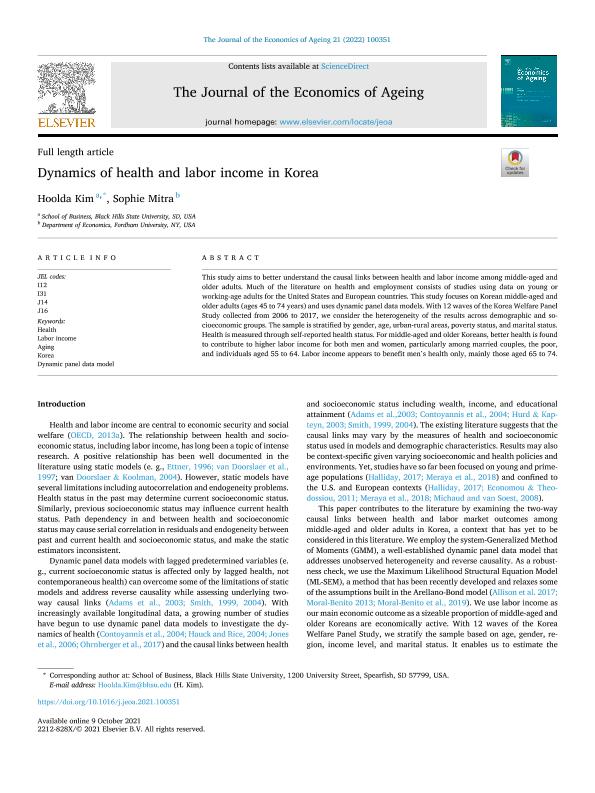Dynamics of health and labor income in Korea

Contenido multimedia no disponible por derechos de autor o por acceso restringido. Contacte con la institución para más información.
| Tag | 1 | 2 | Value |
|---|---|---|---|
| LDR | 00000cab a2200000 4500 | ||
| 001 | MAP20220004008 | ||
| 003 | MAP | ||
| 005 | 20220204112425.0 | ||
| 008 | 220204e20220117esp|||p |0|||b|spa d | ||
| 040 | $aMAP$bspa$dMAP | ||
| 084 | $a931.2 | ||
| 100 | 1 | $0MAPA20220001229$aKim, Hoolda | |
| 245 | 1 | 0 | $aDynamics of health and labor income in Korea$cHoolda Kim, Sophie Mitra |
| 520 | $aThis study aims to better understand the causal links between health and labor income among middle-aged and older adults. Much of the literature on health and employment consists of studies using data on young or working-age adults for the United States and European countries. This study focuses on Korean middle-aged and older adults (ages 45 to 74 years) and uses dynamic panel data models. With 12 waves of the Korea Welfare Panel Study collected from 2006 to 2017, we consider the heterogeneity of the results across demographic and socioeconomic groups. The sample is stratified by gender, age, urban-rural areas, poverty status, and marital status. Health is measured through self-reported health status. For middle-aged and older Koreans, better health is found to contribute to higher labor income for both men and women, particularly among married couples, the poor, and individuals aged 55 to 64. Labor income appears to benefit men's health only, mainly those aged 65 to 74. | ||
| 650 | 4 | $0MAPA20080539771$aSalud | |
| 650 | 4 | $0MAPA20200021445$aAgeingnomics. Senior economy | |
| 650 | 4 | $0MAPA20080605155$aCondiciones de trabajo | |
| 651 | 1 | $0MAPA20080643737$aCorea | |
| 700 | 1 | $0MAPA20220001236$aMitra, Sophie | |
| 773 | 0 | $wMAP20210010194$g17/01/2022 Volumen 21 - 2022 , 16 p.$tThe Journal of the economics of ageing $dOxford : Elsevier ScienceDirect, 2021- |

